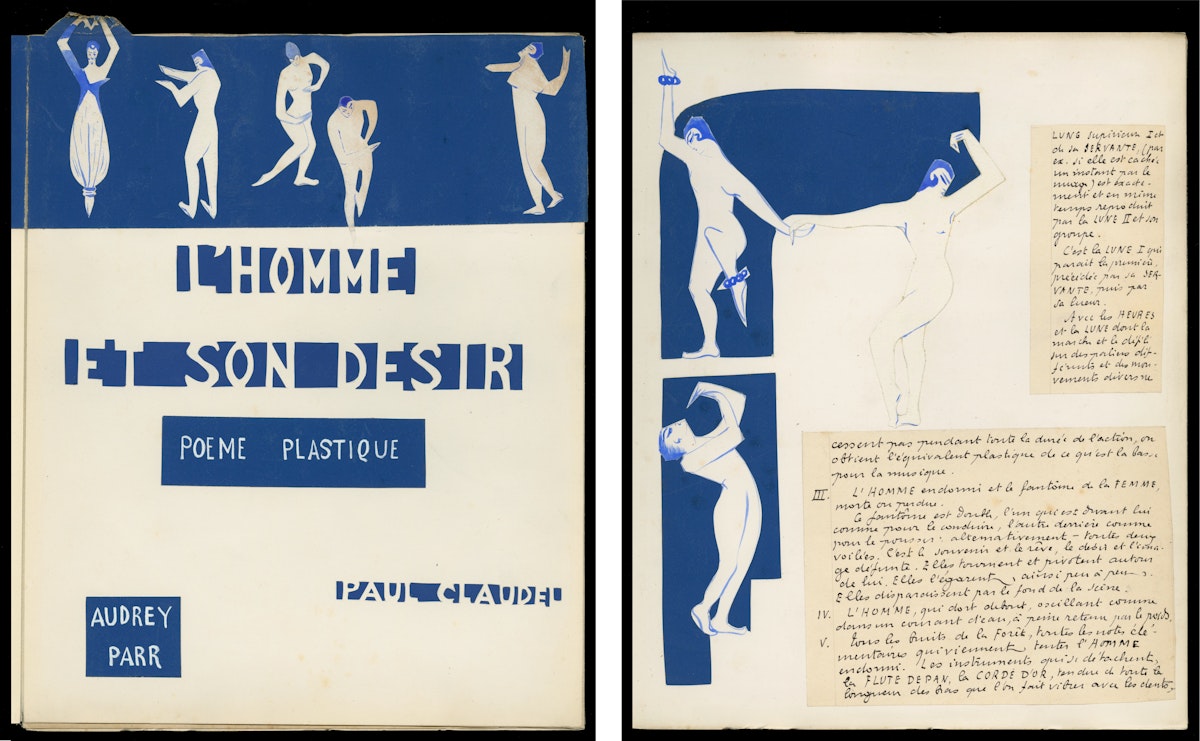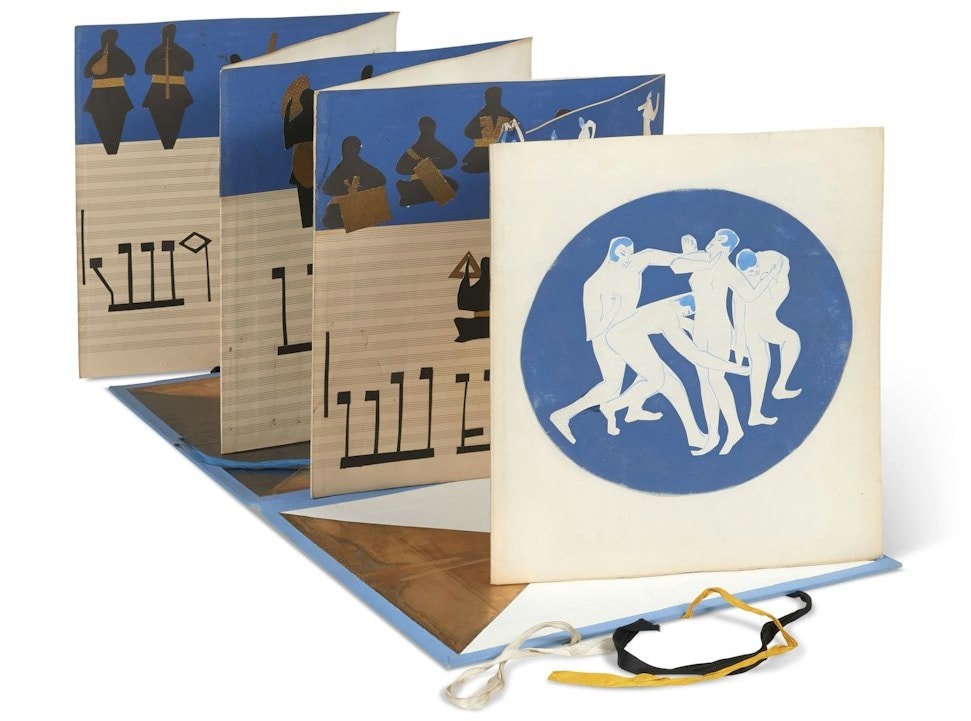
Modernity in the Rainforest: Man and his Desire (1917)
Where do you go to find the modern? For the French composer Darius Milhaud, the answer would lie in the rainforest of Brazil. In January 1917, having agreed to act as secretary for the poet Paul Claudel, who had just been appointed as France’s minister plenipotentiary in the country, he embarked from Lisbon on a steamer bound for Rio de Janeiro. He docked in the Brazilian capital on February 1st and disembarked into a summer heat wave.
As they worked together over the next two years, the two men began a long-term artistic collaboration that would set the seal on Milhaud’s unique brand of musical modernism. Brazilian melodies and rhythms explain the character of such relatively popular compositions as Le Boeuf sur le toit (the ox on the roof) and Scaramouche. But before these came a more radical and daring work, now hardly ever programmed in concerts, a ballet with the title L’Homme et son désir, with a scenario by Claudel, a beautiful edition of which is featured above. Milhaud’s unusual score calls for a small orchestral ensemble backed up by four vocal parts and nineteen percussion instruments. In later life, he considered L’Homme to be one of his most important works.
They were unlikely artistic collaborators on the face of it. Claudel was nearly fifty, with more than two decades of diplomatic service already behind him, conservative, Catholic, Parisian, and conventionally anti-Semitic. Milhaud was twenty-five years old and, as he would characterize himself in his autobiography, “a Frenchman from Provence, and, by religion, a Jew.”
But, brought together in this stimulating new environment, they shared a wish to create art. Europe and its war were far away. Here, there was time. There was quiet. And there was noise. New for Milhaud were the sounds of the forest that would suffuse his work. Claudel was one of his favourite authors, and he had sought the collaboration, feeling that “the extraordinary pounding of Claudel’s language” could lead him toward his own distinctive musical style. The rhythms of Claudel’s verse and the wild rhythms of the forest would clash and blend in L’Homme et son désir.
 Scroll through the whole page to download all images before printing.
Scroll through the whole page to download all images before printing.There was also a third partner in Audrey Parr, the half-French wife of a British diplomat, whom Claudel had met on a previous posting, who would design the ballet’s sets and costumes. Parr’s set took the nighttime forest as its stage. Horizontal layers of green, blue, purple, and black depicted the sky with the moon and cloud, the verdant growth and creatures of the forest, and the waters of the primeval swamp reflecting the moonlight. Positioning the instrumentalists and singers in small groups on each tier made them seem like the staves of a musical score. The unconventional placement anticipated later modernist compositions in which the players are spatially separated for acoustic effect, and added to the dramatic impact of the music. The double bass was moved away from the other strings and put with the woodwinds, which some musicologists have suggested shows that Milhaud was already absorbing ideas from the jazz that would colour his later works.
Before sets could be built and dancers hired, the artistic collaborators laid out their vision with ink. Claudel and Parr produced fifty-three handmade books, concertina-folded in Japanese fashion with gilded endpapers, comprising four pages of Claudel’s handwritten scenario for the ballet surrounded by cutouts of naked dancing figures by Parr, together with a few more drawings in blue ink based on scenes. The figures invite comparison with Matisse’s famous painting, The Dance, of 1910, and anticipate Picasso’s The Three Dancers of 1925. The verso sides of these pages fold out into a long collage created by Hélène Hoppenot, the wife of another French diplomat, who later achieved fame as a photographer. It shows the positions of the instrumentalists and dancers on the stage, pasted above a strip of manuscript paper with fragments of Milhaud’s score drawn on it in stylized notation. The resulting book, like the ballet itself, was a deeply collaborative affair, the creation of friends who, as Claudel wrote, “held a picnic of ideas, music, and drawings every Sunday on the Sierra overlooking Rio de Janeiro. This little plastic drama is a product of the atmosphere of the Brazilian forest in which we were somehow submerged.”
 Scroll through the whole page to download all images before printing.
Scroll through the whole page to download all images before printing.Milhaud found few pieces so enjoyable to write. “We were in constant contact with the virgin forest and its mysteries”, he recalled later. “At sunset, the nocturnal sounds of the forest burst forth suddenly, the simple life-noises of little animals of all kinds: toads, birds, insects, vibrating together in a richness of undreamed-of tonalities.” Milhaud’s unpitched percussion — including two types of castanets, a whip, and a siren, as well as drums of all sorts — aims to evoke this natural chaos with complex overlapping rhythms. The score also calls for a hammer and plank, which are used to recreate the resonant banging call of the cooper-toads that infested the forest floor.
Milhaud immerses us in nature, but nature as it has never before been heard in music. L’Homme et son désir begins with a quiet, insect-like clicking. A piping theme is heard, a small creature’s fanfare. Background strings slowly build an atmosphere, with calls across from one side of the stage to the other, gradually blending into a sustained aural world. Suddenly, voices break in, loud and frightening, with unintelligible words. They fade away, and a new kind of pulsing starts, a bird calls, is answered . . . and so it goes for some sixteen minutes of scratching, shrieking and strumming, interrupted by odd human invocations, terrifying and alluring all at once. The rhythmic complexity makes this the most modernistic piece in Milhaud’s prolific output and invites comparison with Stravinsky’s The Rite of Spring.
 Scroll through the whole page to download all images before printing.
Scroll through the whole page to download all images before printing.The book's concertina-folded layout — Source.
Claudel’s scenario explains the origin of these strange sounds. It depicts “Man taken over by primitive powers and from whom Night and Sleep have stripped all name and countenance.” He is first led by two figures representing Image and Desire, Memory and Illusion, who tease him before they disappear to leave him sleeping under the glare of the tropical moon as the forest animals all come to look at him. He awakens to see a vision before him, dancing “the eternal dance of Nostalgia, Desire and Exile, that of captives and abandoned lovers, that which for entire nights causes people to pace feverishly all night from end to end of their verandas tormented by insomnia, that of the animals in the menageries who throw themselves, and throw themselves again and again and again once more against the impassable bars.”
L’Homme et son désir did not receive its premiere until June 1921 when it was put on by the Ballets Suédois in Paris. Milhaud — whose name was by now associated with the frivolities of the group of composers known as Les Six, which included Francis Poulenc and Arthur Honegger, and counted Erik Satie and Jean Cocteau as its guiding lights — had feared that critics would not take the work seriously. In the event, he need not have worried. The critics acknowledged its originality, although public audiences reacted with a “tempest of animal cries and rude laughter”, according to Milhaud’s biographer Paul Collaer, for whom the occasion recalled the famous near-riot provoked by The Rite of Spring eight years before. Milhaud himself noted varying reactions, “ranging from restlessness to solemn attention”. By the time that Milhaud’s more famous jazz-inflected work, La Création du monde, was premiered two years later, also by the Ballets Suédois, he no longer cared. “The press is vile”, he noted. “I rejoice”.
Many Europeans dreamed of bringing modernity to the Brazilian rainforest — the telegraph, the railway, the opera house at Manaus. The folly of such projects is the subject of Werner Herzog’s famous film, Fitzcarraldo. But the modern was already there, waiting. And Milhaud and Claudel found it.
Nov 16, 2023








